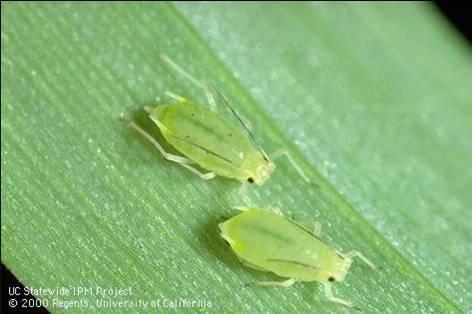A few weeks ago, Scott asked me if I would write a few words that could be included in this newsletter. Since my career was as a research entomologist with A&M here in Amarillo, I jokingly asked if I should weave “bugs” and trains together. Being one who always leaves me with my mouth agape, he said sure! So here goes.
From the Desk of Jerry Michels:
A devastating pest of wheat and sorghum in the Panhandle is a little aphid called the greenbug. I researched this pest for many years trying to find practical management programs. The greenbug is an exotic species, meaning it didn’t occur naturally in the United States. It was first recorded in 1882 in Virginia on wheat, probably on imported hay or straw.
As the Texas Panhandle developed, Amarillo became a focal point for cattle shipping and the days of the romantic trail drive ended.
The first Fort Worth & Denver City passenger train arrived in Amarillo in March of 1888. Construction was completed to Texline where the Fort Worth & Denver City connected with the Colorado and Southern. The two companies, with a system reaching from Wyoming to the Gulf of Mexico, were now consolidated into the Burlington System 1.
With the booming cattle business came a need for feed and bedding. With the railroad offering freight service, it was economically feasible to ship carloads of fresh hay and straw from the south to Amarillo. As the story goes 2, it was in these shipments that some greenbugs hitched a ride to the High Plains. When this occurred is not known and the critter(s) had no economic impact.
As noted above, the FtW&D eventually made a connected with the Colorado and Southern Railway, and of course hay and straw shipments headed farther and farther north. The Amarillo Railroad Museum has original timebooks for FtW&D conductor William Peake that confirms hay was being shipped through Amarillo on the FtW&D as late as 1928.
Keep in mind that large acreages of wheat were decades in the future. It is theorized that the greenbug survived in low numbers on native wheatgrasses. The aphid can use over 70 grasses as hosts3. As wheat acreages increased, the greenbug found an abundant food source on which it could thrive.
So, I guess it is possible that insect and railroad history can be woven together!
Jerry Michels
- https://www.amarillo-chamber.org/amarillo-history.html
- Overton, R. 1953. Gulf to Rockies. University Of Texas Press. Austin.
- Michels, G. J. 1986. Graminaceous North American host plants of the greenbug with notes on biotypes. South. Entomol. 11: 55-66.

